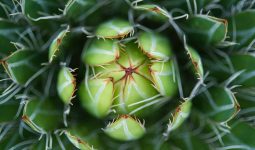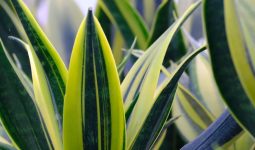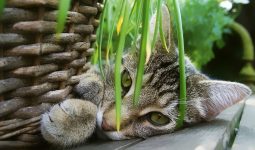Did you know that Kentucky’s lush landscapes hide both beauty and danger? The Bluegrass State is home to many plants that can harm you and your pets.
Kentucky has 15 types of poisonous plants that can cause rashes, skin irritation, and even organ failure if you’re not careful.
You might be surprised to learn that some common plants in your yard could be risky.
Bush honeysuckle, for example, is an invasive species that can crowd out native plants and mess up local ecosystems.
But it’s not just about biodiversity – some plants can make you sick too.
Poison hemlock and poison ivy are two well-known troublemakers that can give you nasty rashes.
Want to keep your garden safe and beautiful? Learning about Kentucky’s dangerous plants is key.
You’ll discover which native alternatives to choose and how to spot the risky ones.
This knowledge will help you enjoy nature while staying safe. Keep reading to find out which plants to watch out for in your backyard and on your hikes.
Poison Ivy
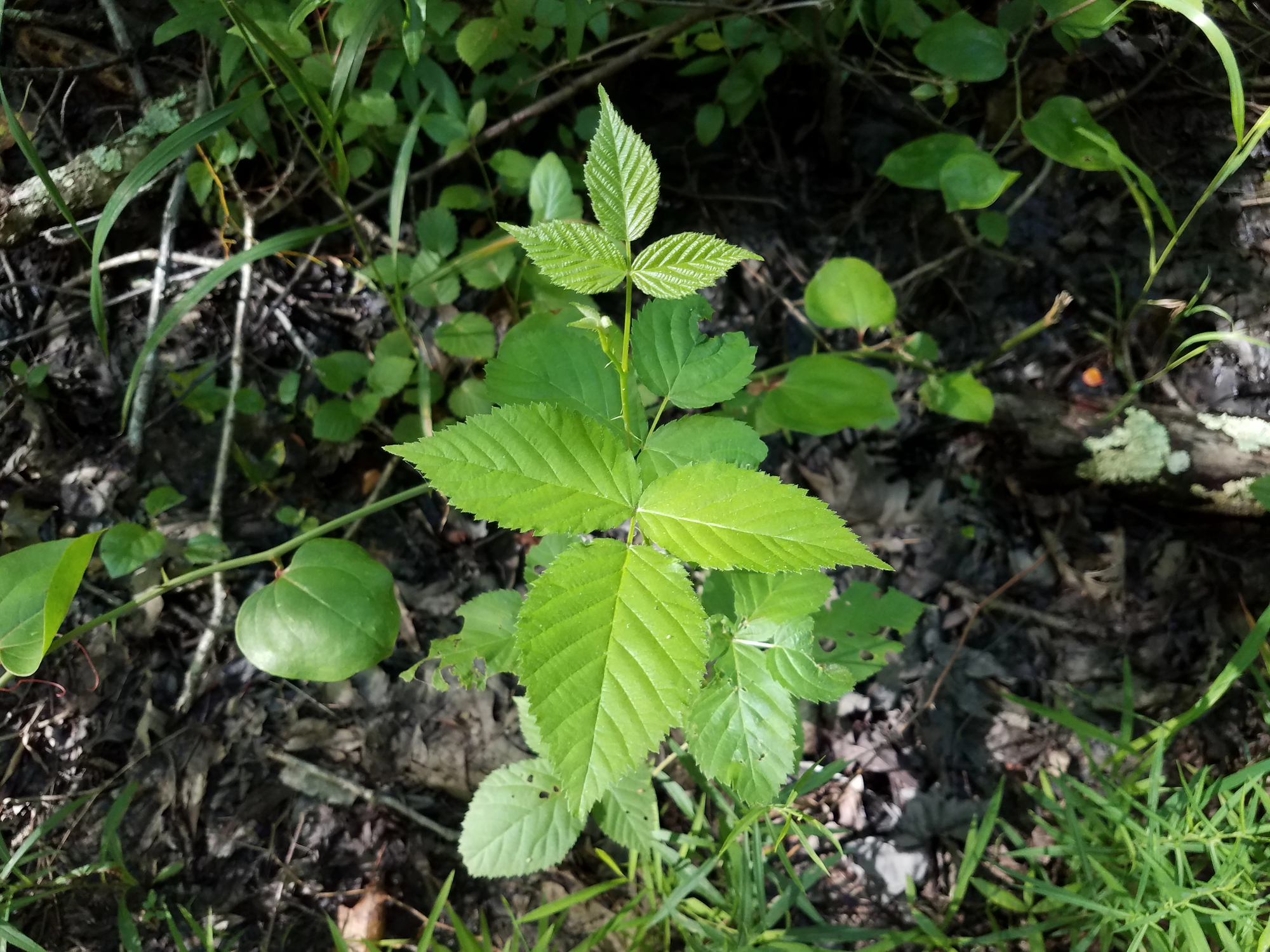
Poison ivy (Toxicodendron radicans) is a common plant you might encounter in Kentucky.
It grows as a vine or shrub and can be found in woods, fields, and even urban areas.
Poison ivy is known for its distinctive leaves. Each leaf has three pointed leaflets, often glossy in appearance. Remember the saying: “Leaves of three, let it be.”
The plant’s oils can cause a painful, itchy rash if you touch it. Even brushing against it lightly can lead to skin irritation.
Symptoms of poison ivy exposure include:
- Redness
- Swelling
- Itching
- Blistering
These symptoms may last for weeks, making it important to avoid contact with the plant.
You can protect yourself by wearing long sleeves and pants when hiking or working outdoors. Learn to identify poison ivy so you can steer clear of it.
If you think you’ve touched poison ivy, wash your skin and clothes right away. This can help remove the oils and reduce the risk of a rash.
Remember, poison ivy can be found in many parts of Kentucky. Stay alert and be cautious when exploring outdoor areas to keep yourself safe from this irritating plant.
Poison Oak
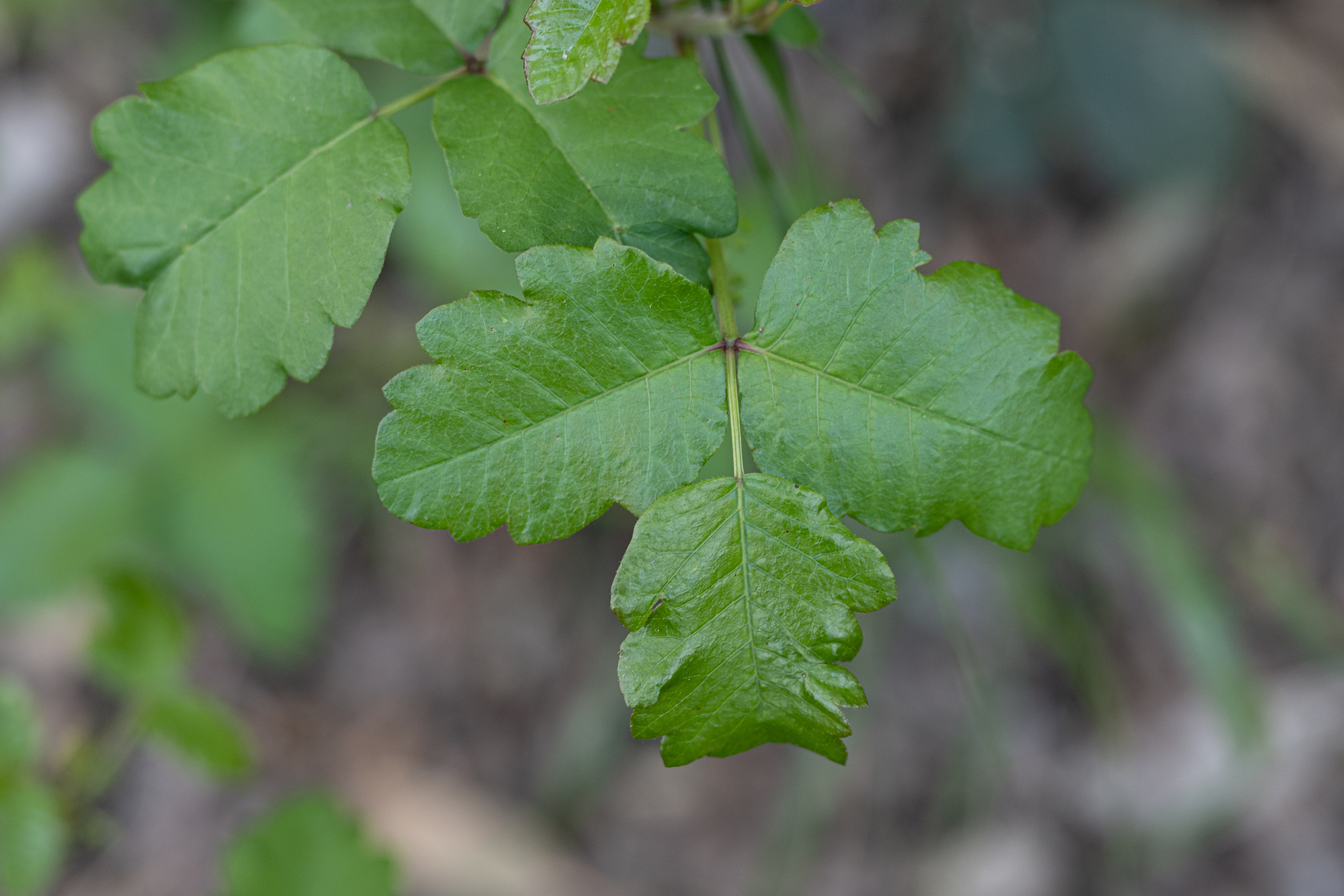
Poison oak (Toxicodendron pubescens) is a dangerous plant you need to watch out for in Kentucky.
It’s a native, low-growing shrub that can cause severe skin reactions.
You might spot poison oak as a small bush, usually 2-4 feet tall. Its leaves have three leaflets that look similar to oak leaves. This is why it’s called poison oak.
The plant contains an oil called urushiol. If you touch it, you could get a nasty rash. The rash can be itchy, painful, and last for weeks.
Here are some key features to help you identify poison oak:
- Three leaflets per leaf
- Leaves are hairy and lobed
- Leaves can be green or reddish
- Small, white or grayish berries in late summer
Be careful when hiking or working in your yard. Poison oak can grow in woods, fields, and along fences.
If you think you’ve touched it, wash your skin and clothes right away.
Remember, Eastern poison oak is different from Western poison oak. In Kentucky, you’ll only find the Eastern variety. It doesn’t climb like its Western cousin.
Stay alert and learn to spot this plant. It’s better to avoid poison oak than to deal with its painful effects.
Poison Sumac
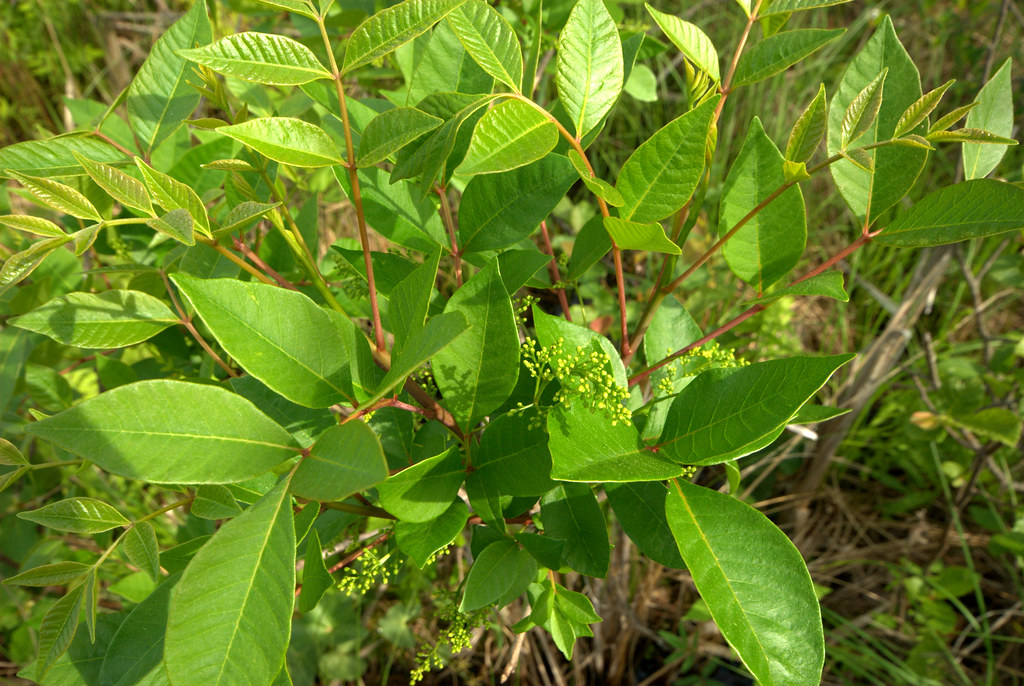
Poison sumac (Toxicodendron vernix) is a dangerous plant you need to watch out for in Kentucky.
It grows as a tall shrub or small tree, reaching up to 20 feet in height.
You’ll find this plant in wet areas like swamps, bogs, and along rivers or ponds.
It thrives in damp soil, so be extra careful when exploring these habitats.
The leaves of poison sumac are compound, with 7 to 13 smooth-edged leaflets per stem. The leaf stems (petioles) have a distinctive red color.
Warning: Every part of the poison sumac plant is toxic. The oils can cause severe skin irritation and rashes. Even dead plants remain dangerous for up to 5 years.
If you come into contact with poison sumac:
- Wash the affected area with soap and water immediately
- Apply a cool compress to reduce itching
- Use calamine lotion or hydrocortisone cream for relief
To stay safe, learn to identify poison sumac and avoid touching it. Wear protective clothing when hiking in areas where it might grow.
Wild Parsnip
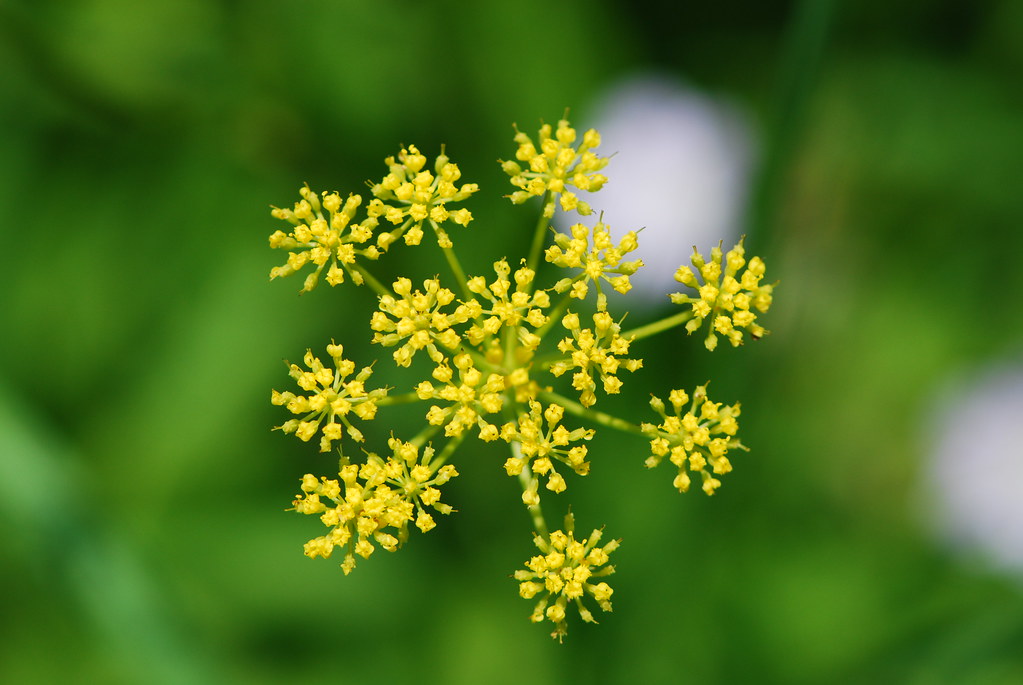
Wild parsnip (Pastinaca sativa) is a dangerous invasive plant found in Kentucky.
You need to be careful around this plant, as it can cause severe harm to your skin.
The plant grows 2-5 feet tall and has yellow flowers. You might mistake it for a harmless wildflower, but don’t be fooled.
If you touch wild parsnip, it can cause skin irritation, blistering rashes, and skin discoloration. The sap of the plant is the main culprit.
Here’s what you need to watch out for:
- Yellow umbrella-shaped flower clusters
- Thick, grooved stems
- Large, compound leaves with jagged edges
Wild parsnip often grows along roadsides and in open fields. You should avoid these areas if you’re unsure about plant identification.
If you spot wild parsnip on your property, don’t try to remove it yourself. Wear protective clothing if you must be near it.
Remember, wild parsnip can look similar to other plants. Always be cautious when exploring outdoors in Kentucky.
Water Hemlock
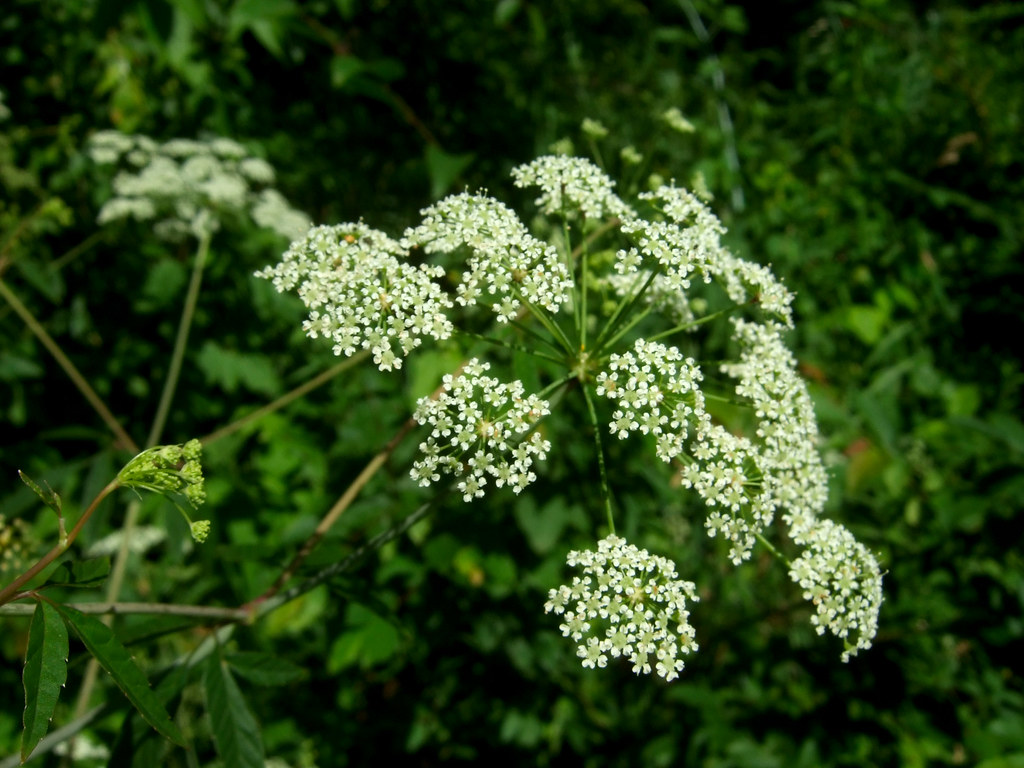
Water hemlock (Cicuta spp.) is one of the most poisonous plants you might encounter in Kentucky.
This deadly plant belongs to the parsley family and grows in wet areas.
You need to be careful not to confuse water hemlock with harmless plants like wild carrots. It can be tricky to tell them apart.
Water hemlock has some key features:
- Grows 2-6 feet tall
- Smooth, hollow stems with purple spots
- Fern-like leaves
- Small white flowers in umbrella-shaped clusters
The entire plant is toxic, but the roots are especially dangerous. Even a small amount can be fatal if eaten.
Don’t touch or handle water hemlock. The poison can absorb through your skin.
If you think you’ve come into contact with it, wash your hands and seek medical help right away.
Water hemlock is often mistaken for its cousin, poison hemlock (Conium maculatum). Both are extremely toxic, so it’s best to avoid any plant that looks similar.
When hiking or exploring wet areas in Kentucky, stay alert. Learn to identify water hemlock and teach your children to avoid it.
Your safety depends on knowing which plants are dangerous.
Pokeweed
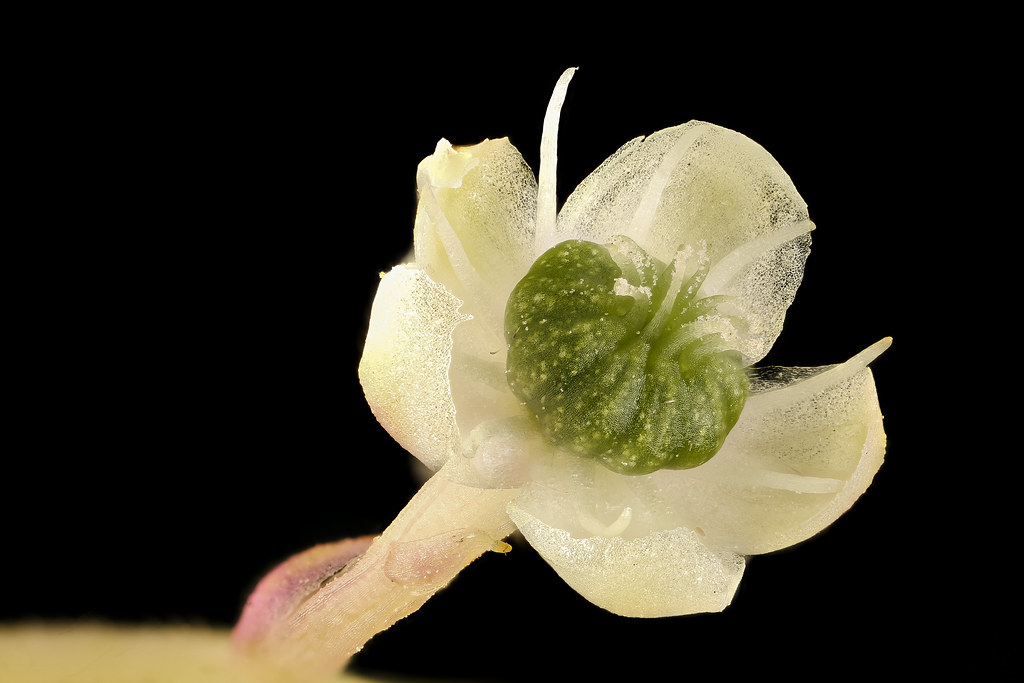
Pokeweed (Phytolacca americana) is a large perennial plant found across Kentucky.
You can spot it by its height, which can reach up to 10 feet tall. The plant has smooth, round stems that change color as they age.
Be careful around pokeweed. It’s not just a harmless weed – all parts of this plant are poisonous.
The berries might look tempting, but don’t eat them. They can make you very sick.
If you have kids or pets, keep them away from pokeweed. The plant’s toxins can cause serious health problems if ingested.
Pokeweed often grows in moist areas. You might see it in open fields, forests, or even along roadsides. Its deep purple berries are a key identifying feature.
If you find pokeweed on your property, consider removing it. Wear gloves and protective clothing when handling the plant. Don’t burn it, as the smoke can be harmful.
Remember, pokeweed isn’t all bad. Some wildlife eat the berries without harm. But for humans, it’s best to admire this plant from a safe distance.
Stay alert when hiking or exploring outdoors in Kentucky. Knowing how to identify pokeweed can help keep you safe from accidental exposure.
Castor Bean

Castor bean plants (Ricinus communis) are dangerous and invasive species you need to be aware of in Kentucky.
These plants can grow quite large and have distinctive large, palm-shaped leaves.
You should be extremely cautious if you spot castor beans in your yard.
The seeds of this plant contain ricin, one of the deadliest natural poisons known. It’s far more toxic than cyanide or rattlesnake venom.
If you have children or pets, it’s crucial to keep castor bean plants out of reach. Consider removing any flowering spikes to prevent seed production.
Should you find castor beans growing on your property, take steps to remove them safely. Wear protective gear and avoid touching the plant with bare skin.
One method to dispose of castor bean plants is boiling them to deactivate the toxin. Do this outdoors in a large pot for 30-45 minutes.
Despite their toxicity, castor beans have been used for industrial purposes. They’re sometimes grown to make motor oil and certain medications.
Remember, your safety is paramount. If you’re unsure about handling these plants, it’s best to contact professionals for removal.
Rhododendron
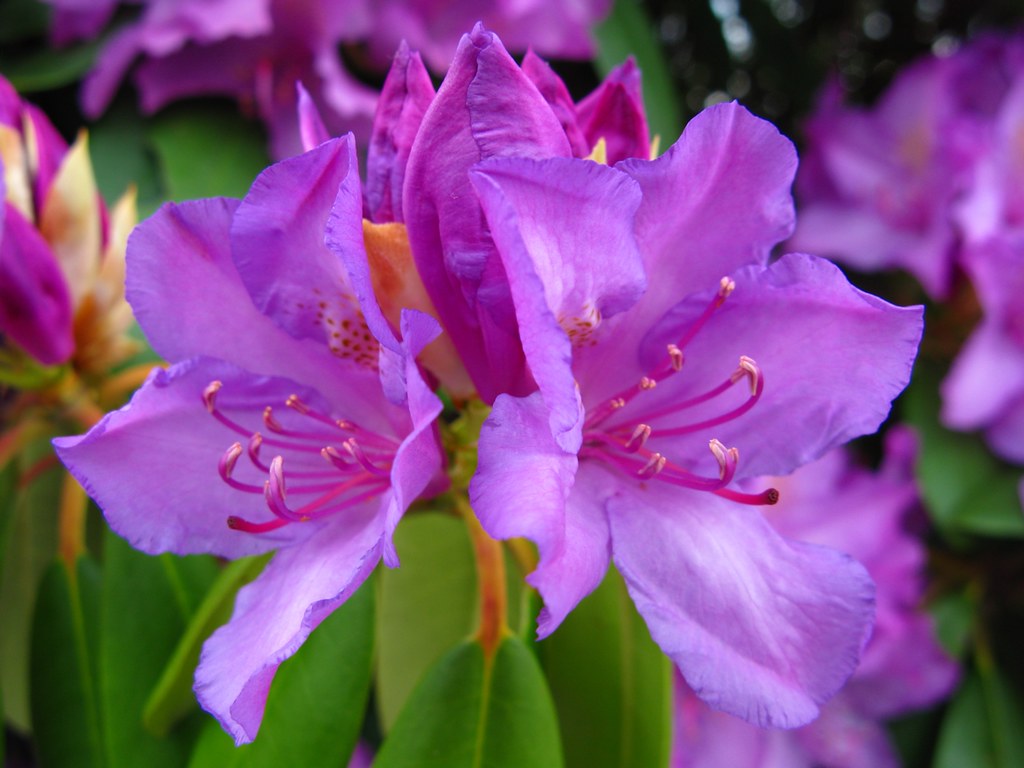
Rhododendrons (Rhododendron spp.) are popular garden plants in Kentucky, but they can be dangerous.
These pretty flowers hide a dark secret – they’re highly toxic. Every part of the rhododendron plant contains poisons.
The leaves, flowers, and even the nectar can make you sick if eaten.
Symptoms of rhododendron poisoning:
- Nausea
- Vomiting
- Weakness
If you have pets or livestock, be extra careful. Animals are more likely to eat rhododendrons, especially in winter when other food is scarce.
Keep an eye on your kids around these plants. Teach them not to touch or eat any part of a rhododendron. Always ask an adult before touching unfamiliar plants.
Rhododendron honey can also be dangerous. Bees make it from the plant’s toxic nectar. In rare cases, eating this honey has caused serious illness.
If you have rhododendrons in your yard, consider fencing them off. This can help protect curious pets and children. Always clean up any fallen leaves or trimmings right away.
Call poison control if you think someone has eaten rhododendron. Quick action can make a big difference.
Deadly Nightshade
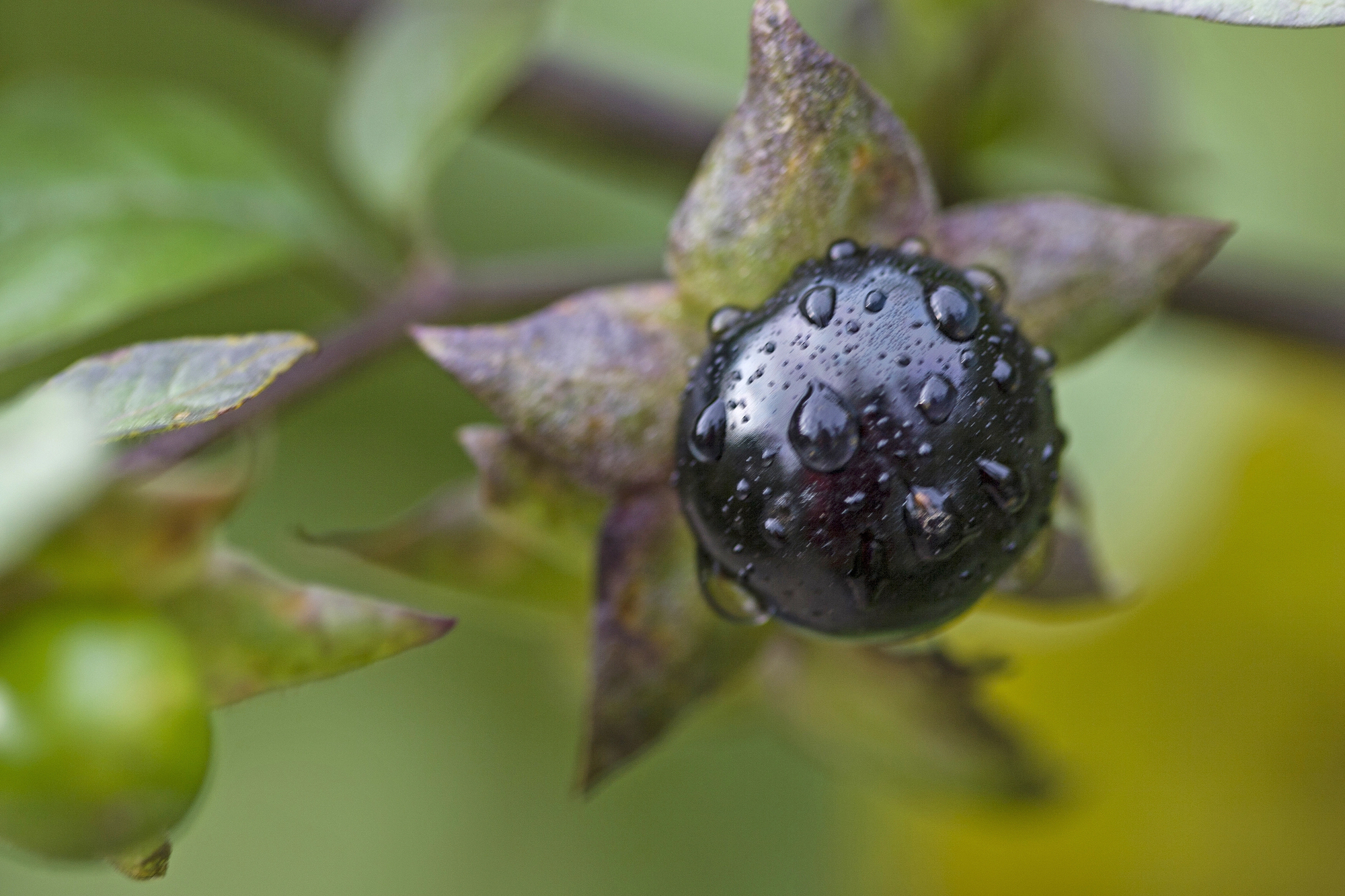
Be warned: Deadly nightshade (Belladonna) (Atropa belladonna) lives up to its name.
This toxic perennial herb grows 3 to 4 feet tall and wide. You’ll spot it by its dark green oval leaves and purple bell-shaped flowers.
The plant’s berries pose the greatest danger. They look like small black cherries, tempting but deadly.
Every part of belladonna contains poisonous compounds.
Symptoms of poisoning include:
- Dilated pupils
- Blurred vision
- Difficulty urinating
- Confusion
- Hallucinations
In severe cases, it can cause coma or death. Don’t touch or ingest any part of this plant.
You might find deadly nightshade in wooded areas or disturbed soils. It’s not native to Kentucky but can grow there.
If you spot it in your yard, remove it carefully wearing gloves and protective clothing.
While dangerous, belladonna has medicinal uses under strict control. It’s used to make some eye drops and motion sickness patches.
But never try to use it yourself – leave that to professionals. Remember, admire this striking plant from afar. Its beauty isn’t worth the risk.
Autumn Crocus
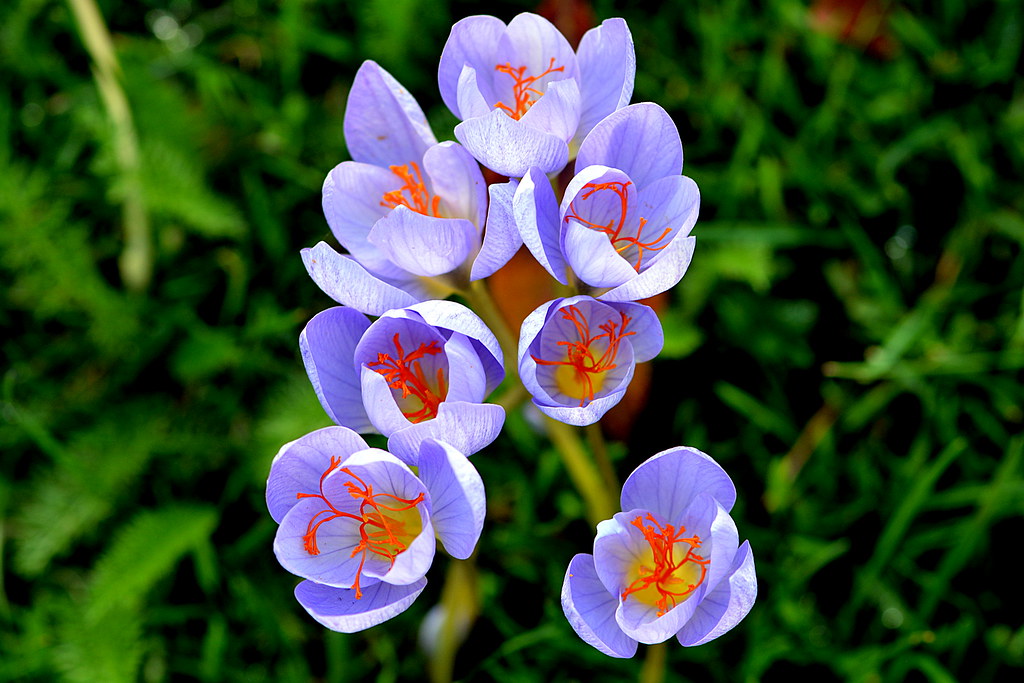
Autumn crocus (Colchicum autumnale), also known as meadow saffron, is a dangerous plant you might encounter in Kentucky.
Don’t let its pretty flowers fool you – this plant is highly toxic. You’ll see its purple-pink or white flowers in the fall.
The flowers look like crocuses, but they’re not related. Autumn crocus belongs to a different plant family.
Be careful if you spot this plant in meadows or woodlands. All parts of it are poisonous, especially the bulbs and seeds. Even touching it can cause skin irritation.
If you eat any part of the autumn crocus, you could get very sick. Symptoms include:
- Nausea
- Vomiting
- Stomach pain
- Diarrhea
In severe cases, it can cause organ failure or even death. There’s no antidote, so prevention is key.
Keep children and pets away from this plant. Don’t mistake it for true crocuses or saffron, which are safe to eat.
If you think you’ve eaten autumn crocus, seek medical help right away. Quick treatment is important.
Remember, it’s best to admire this toxic beauty from a distance. Never eat plants you can’t identify with 100% certainty.
English Ivy
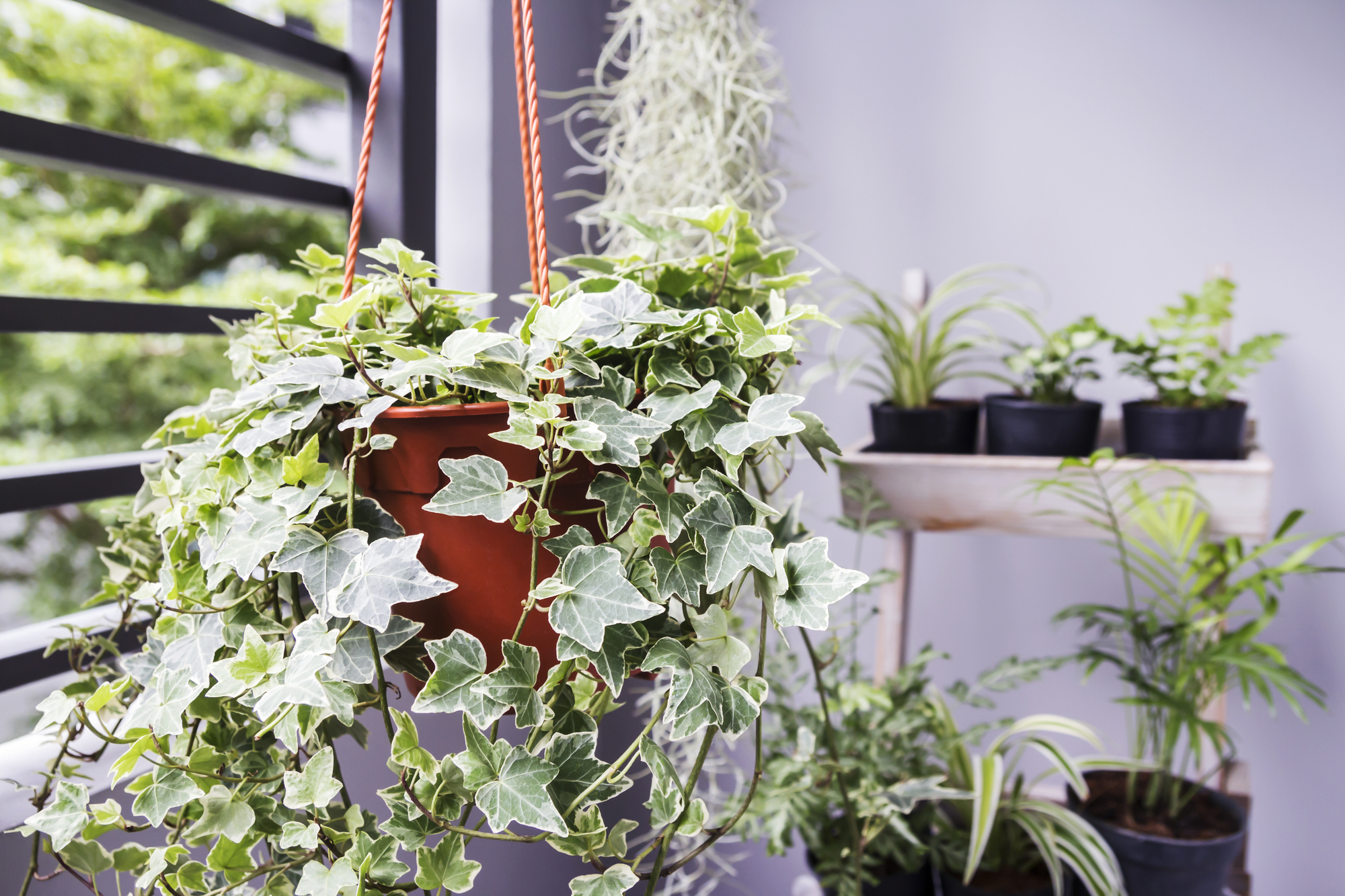
English ivy (Hedera helix) is a dangerous invasive plant that threatens Kentucky’s natural areas. You should be aware of its harmful effects on the environment.
This fast-growing vine can quickly take over your garden and nearby forests.
It climbs trees and smothers native plants, robbing them of sunlight and nutrients.
English ivy’s dense growth can damage buildings and structures. Its strong vines can weaken walls and fences, causing costly repairs.
Be cautious if you have pets or small children. The leaves and berries of English ivy are toxic if eaten. They can cause skin irritation in some people too.
Removing English ivy can be challenging. It spreads through seeds and stem fragments. Herbicides may be needed for effective control in large infestations.
Consider planting native alternatives instead. Virginia creeper is a good option that provides similar ground cover without the invasive risks.
If you spot English ivy in natural areas, report it to local conservation authorities. Your action can help protect Kentucky’s native ecosystems.
Bitterweed
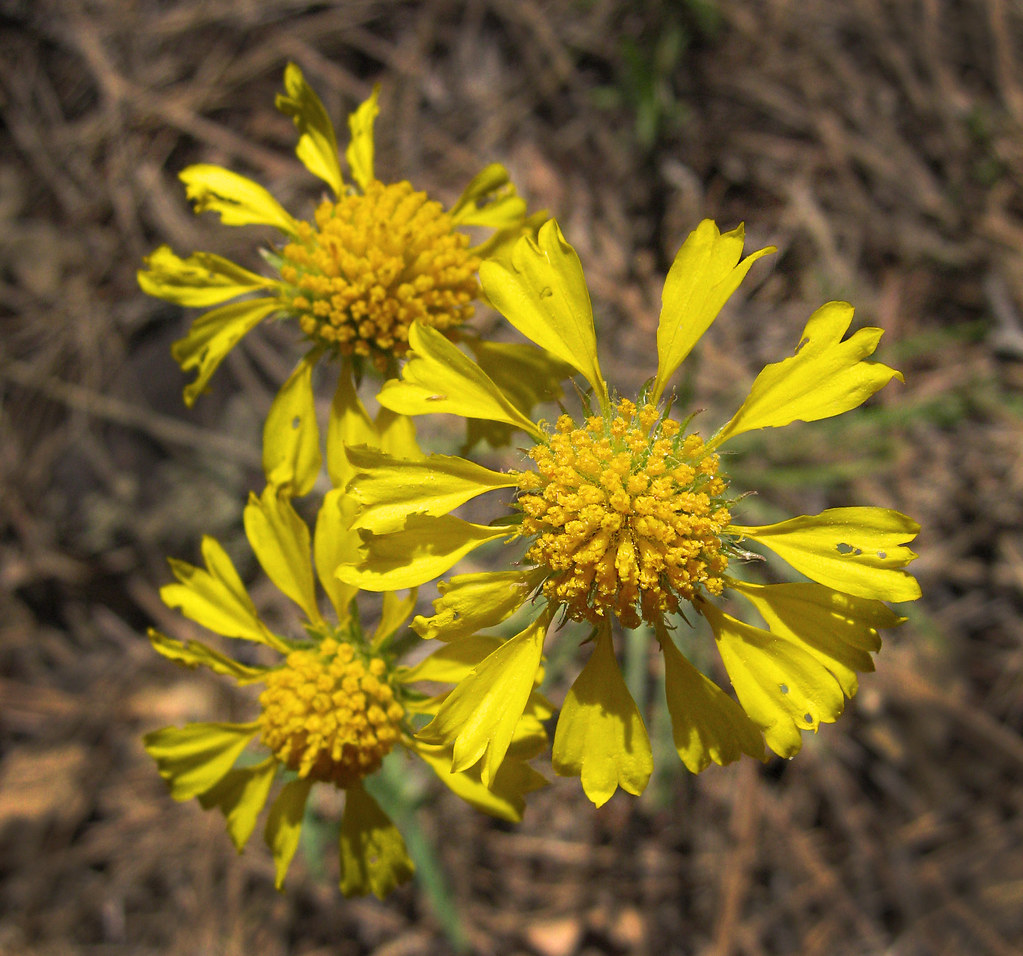
Bitterweed (Helenium spp.) is a poisonous plant found in Kentucky. You need to be careful around this plant, as it can cause harm to both humans and animals.
These plants are part of the Helenium genus. They have bright yellow flowers that might look pretty, but don’t be fooled.
Bitterweed can grow up to 2 feet tall and has simple, alternate leaves.
If you’re a farmer, watch out! Bitterweed can make cow’s milk taste bitter if the cows eat it. This is why it’s sometimes called Bitter Sneezeweed.
Bitterweed contains toxic compounds called sesquiterpene lactones. These can be dangerous if eaten. The new growth of the plant is especially toxic.
You might spot bitterweed in these places:
- Meadows
- Roadsides
- Disturbed areas
Be extra careful with your pets and livestock. Even a small amount can be harmful.
For sheep, eating just 0.25% of their body weight in green bitterweed can be deadly.
If you think you or your animals have eaten bitterweed, get medical help right away. It’s always better to be safe when dealing with poisonous plants.
Nightshade

Nightshade plants (Solanum spp.) belong to the Solanaceae family. You need to be careful around these plants as many are toxic. The main poison in nightshades is solanine.
Some common nightshades in Kentucky include:
- Bittersweet nightshade (Solanum dulcamara)
- Black nightshade (Solanum nigrum)
- Horse nettle (Solanum carolinense)
Bittersweet nightshade is especially dangerous. It can be found in pastures and along fences.
This plant is toxic to wildlife and livestock. If you spot nightshade plants, keep children and pets away.
Symptoms of nightshade poisoning can include:
- Diarrhea
- Convulsions
- Lack of coordination
In severe cases, nightshade poisoning can lead to death. Be sure to learn how to identify these plants.
If you find them in your yard or garden, remove them carefully. Wear gloves and long sleeves to avoid skin contact.
Not all nightshades are harmful. Some common food plants like tomatoes and potatoes are in this family.
But wild nightshades in Kentucky can be very dangerous. Always be cautious around unfamiliar plants.
Japanese Yew
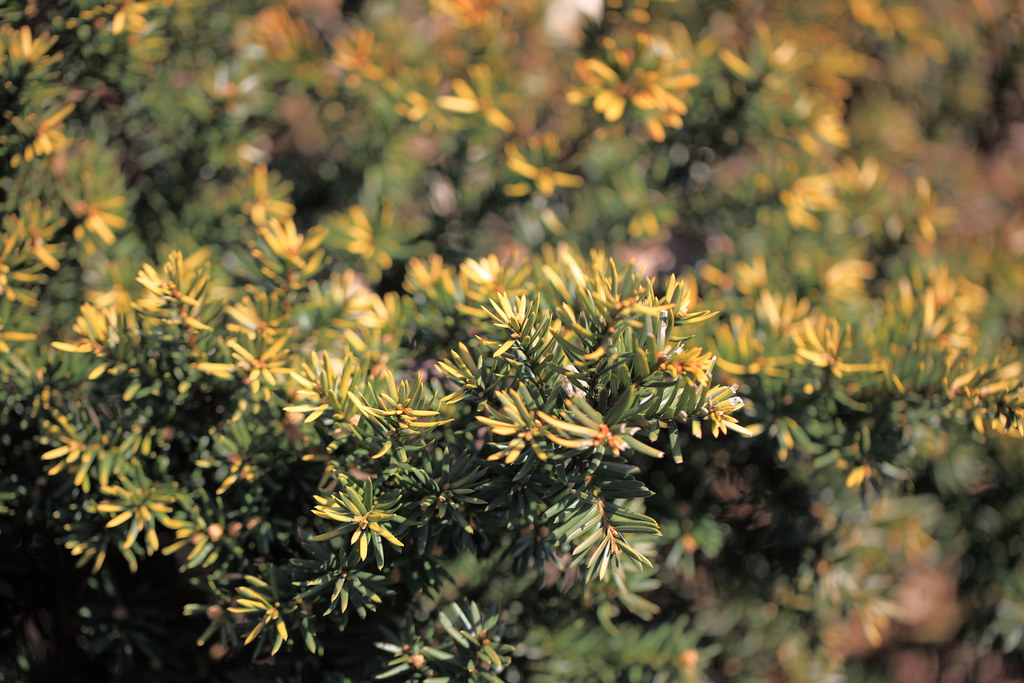
Japanese yew (Taxus cuspidata) is a dangerous woody evergreen plant you should be aware of in Kentucky.
This shrub or small tree can be found in many landscapes due to its attractive foliage and hardiness.
You need to be extremely cautious around this plant. Every part of the Japanese yew, except for the fleshy red part of the berry, contains toxic alkaloids.
These toxins can be lethal if ingested, even in small amounts. If you have pets or livestock, keep them away from Japanese yew.
The plant is particularly dangerous to animals, and ingestion of even a small amount can be fatal.
Be careful when handling Japanese yew. Wear gloves and avoid touching your face or mouth. Wash your hands thoroughly after any contact with the plant.
If you suspect someone has ingested Japanese yew, seek medical help immediately. Look for symptoms like:
- Difficulty breathing
- Trembling
- Vomiting
- Sudden collapse
Remember, prevention is key. If you have Japanese yew on your property, consider removing it, especially if you have children or animals.
Always be vigilant and educate others about the dangers of this plant.





